wide angle
Latest
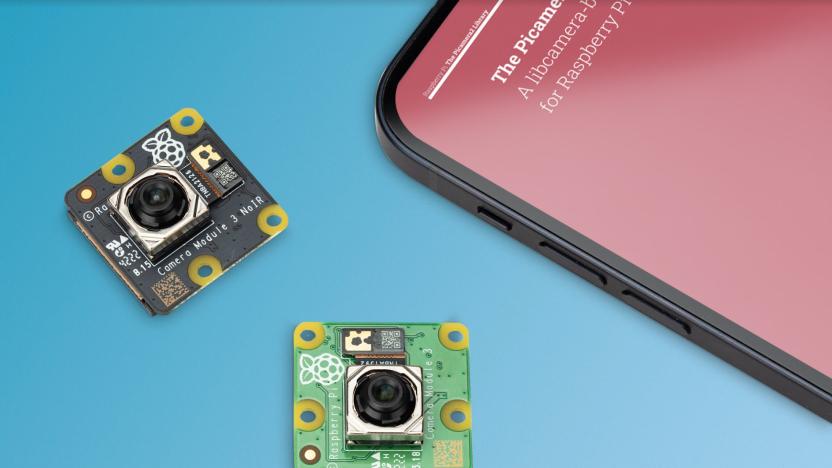
Raspberry Pi's new 12-megapixel camera modules provide powered autofocus
Raspberry Pi has launched the Camera Module 3 with big improvements, including higher resolution, infrared, HDR, autofocus and more.
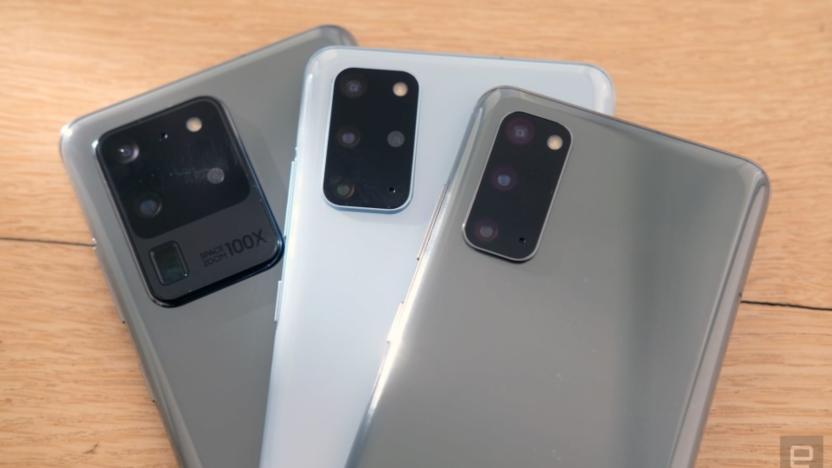
Samsung's Galaxy S20 cameras: AI tools and gimmicky zooms
Samsung just announced its next-generation Galaxy S20 phones, and as you'd expect, the cameras are a highly anticipated part of that. Samsung didn't disappoint, unveiling photo features for its three new devices (the Galaxy S20, S20+ and S20 Ultra) that go far beyond the S10. While there's plenty to talk about, the key phrase today is "Space Zoom" and to a lesser extent, AI.
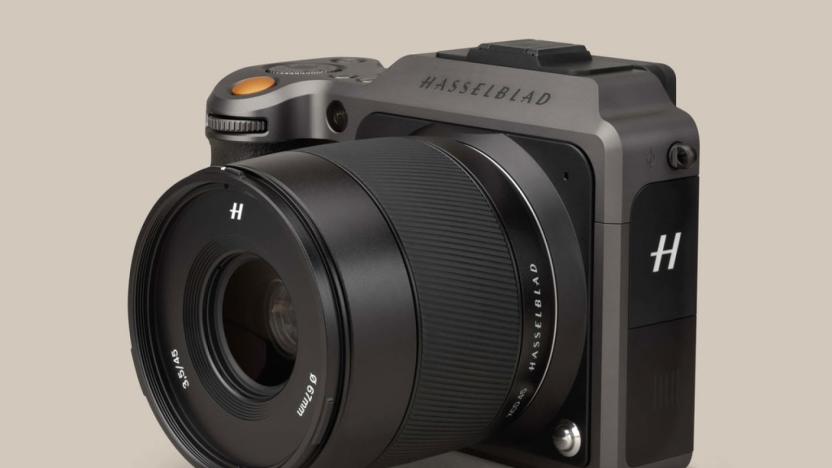
Hasselblad’s X1D II mirrorless camera is faster and more affordable
Most of the recent updates from Hasselblad have had to do with the cameras popping up on drones or costing $48,000. But the company is still working on the mirrorless medium-format cameras and accompanying lenses that built its reputation. Today, it announced a handful of updates, including an evolved X1D II 50C camera, a new XCD 3,5-4,5/35-75 Zoom Lens, the Phocus Mobile 2 and details on more to come.
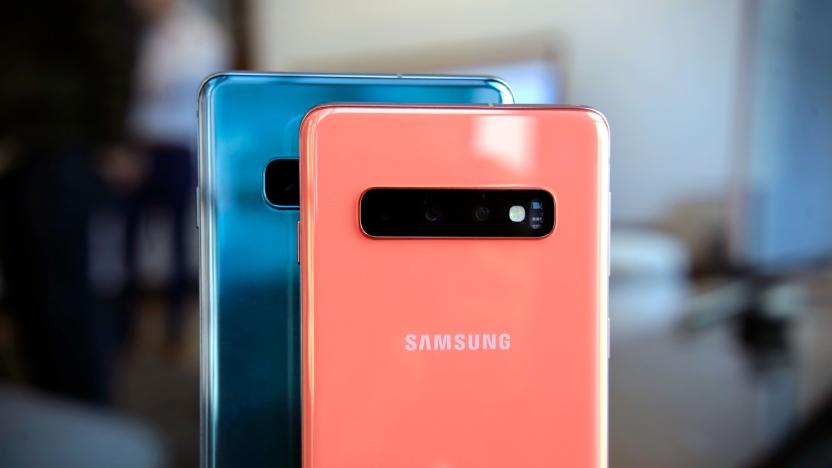
Samsung’s Galaxy S10 goes wide with a third camera lens
Following Huawei's lead with the Mate 20 Pro, Samsung has introduced a third piece of glass for its new Galaxy S10. The additional wide angle lens should make short work of landscapes and large group shots.
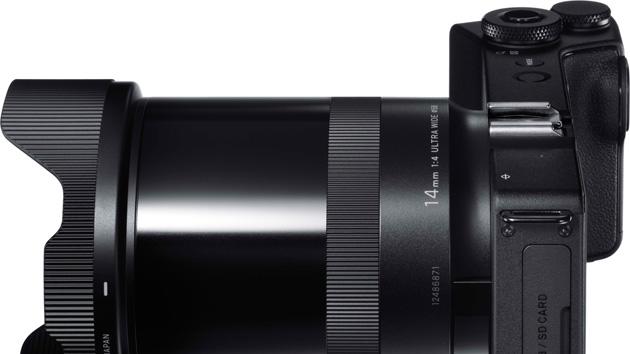
Sigma makes a super wide-angle version of its super wide camera
Don't think Sigma's extremely wide dp Quattro cameras are outrageous enough? Don't worry, the company has you covered. The new dp0 Quattro mates a new version of Sigma's high-detail Foveon X3 sensor (billed here as equal to a 39-megapixel conventional sensor) with a fixed 14mm f/4 ultra wide-angle lens. Yes, you read that correctly -- buy a dp0 and your only choice is to capture all-encompassing shots. While the glass corrects for the chromatic aberrations and distortions you sometimes see in wide-angle imagery, you'll need a penchant for shooting landscapes or real estate ads if this is going to make much sense. Sigma isn't talking about prices or ship dates for the dp0 just yet, but the $999 price of both the dp1 and dp2 suggests that you'll be paying a hefty sum to own a compact cam with freaky optics.

LG EA93 21:9 aspect ratio 29-inch LCD spotted on IFA show floor (eyes-on)
Fancy a wickedly wide 21:9 aspect ratio LCD that's more than a touch larger than what you'll find on that unique Toshiba Ultrabook? It looks like LG's got you covered, with its 29-inch EA93. We spotted a half dozen of the ultra-wide IPS displays during a preview of the show floor at IFA, and were able to grab a few frames. You need to see this LCD in person to get a feel for just how wide it really is -- with a 29-inch diagonal panel that's incredibly short and squat, you'll be compromising quite a bit of desk real estate in order to add some horizontal pixels. From booth materials, it seems that LG is promoting this product as a multitasking solution -- the format is well-suited as a replacement for dual-monitor rigs, letting you view several windows at once without adjusting your eyes vertically. We already had a solid grasp on the EA93's specs, which include a 2,560 x 1,080-pixel panel, a four-way split screen feature and plenty of inputs, including two HDMI ports, DVI Dual Link and DisplayPort, though the product placard also revealed USB 3.0 connectivity and 7-watt stereo speakers. Pricing has yet to be confirmed, but if you're prepared to add such a device at any cost, we'd suggest clearing some desk space now -- these are set to ship in November.

Mobi-Lens clip-on lenses deserve your Kickstarter love
OK, TUAW readers. It's time to once again prove that Kickstarter works to get some really cool projects off the ground. In this case, it's an accessory lens setup for mobile devices. Yeah, we've seen them before -- but they're usually set up with some sort of case that only works with one kind of device. You buy one for an iPhone 4S, for example, and when Apple comes out with a new iPhone, suddenly the case doesn't fit anymore. The Mobi-Lens is designed to let you buy one kit and use it on any number of generations of electronic devices with cameras. The Mobi-Lens project accomplishes this with a deceptively simple design. It's a clip-on lens that reminds me of an old-fashioned clothespin, except one that's been updated in bright colored plastic and given a lens implant. More correctly, multiple lens implants -- inventors Aris and Evette Allahverdian are proposing a 2-in-1 wide-angle / macro lens as well as a fisheye lens version. What's awesome about this is that you can use the Mobi-Lens with just about any existing or future device with a camera. Want to use it on your iPad? Clip it on. Use it with your iPhone 4S? Clip it on. That sorry brother-in-law of yours who has an Android phone? Yeah, he can borrow the Mobi-Lens from you, but I'd keep an eye on him because you'll probably never get it back. Want a wide-angle view from the camera on your MacBook Air? Yeah, you can do that too. At this point, however, the Mobi-Lens might just be an über-compatible mobile phone photographer's dream, because the project is woefully underfunded at this point. With about 35 days to go, the project is at only about $2,900 of the $34,000 needed to start production. You can back the project and get one of the clip-on lenses for as little as $30, although higher support levels open up exclusive colors and the fisheye clip-on. My wish is that Aris and Evette get more than their minimum funding amount and look into a telephoto lens version as well. There are a lot of ways to get wide-angle and macro lenses (see the Phocus as an example), but nobody seems to be looking at the telephoto or zoom end of the business -- which is why I still use a "real camera" for a lot of photography. Give me the option of a telephoto that I can clip onto my 18-megapixel iPhone 6 and I may seriously consider using it as my sole camera. Interested? Here's the video pitch from Aris and Evette: #next_pages_container { width: 5px; hight: 5px; position: absolute; top: -100px; left: -100px; z-index: 2147483647 !important; } #next_pages_container { width: 5px; hight: 5px; position: absolute; top: -100px; left: -100px; z-index: 2147483647 !important; }

Samsung's WiFi-laced DV300F camera now available, priced at $200
After having launched in January, Samsung's WiFi-enabled DV300F camera officially hit the market today, according to a fresh announcement from the Korean manufacturer. As the latest addition to the DualView line, this 16 megapixel shooter features a 25mm wide angle lens with 5x optical zoom, and boasts a three-inch main LCD, along with that 1.5-inch front-facing display. The latter is specifically designed to make self-shots a bit easier to manipulate, but it also features some extra kids games in "Children Mode," to help keep the little ones at bay. And of course, there's onboard WiFi connectivity, allowing users to instantly upload shots to Picasa and Facebook, and an extra "Smart Face Recognition" function. According to Samsung, the device is now available on a "global basis," for a price of ₩299,000, or about $266. For more details, check out the full, but choppily translated PR, after the break. Update: We've received word that U.S. pricing has been announced as well, with the DV300F hitting stateside shelves for $199.99. That model, along with the $229.99 WB150F, are shipping now.

Photojojo phone lenses give your iPhone a new set of eyes
I've been a fan of Photojojo for a while. The site sells all sorts of fun and useful camera gear and gifts, things like an SLR Bokeh kit or a inexpensive point-and-shoot tilt-shift digital camera. When they offered to let TUAW try out a set of three phone lenses that give iPhone shooters a choice of different widths of field, I jumped on the chance. Here's how Photojojo's little lenses work on your iPhone for fun photography. There are three lenses available -- one is a 2X telephoto, one is a 180° field-of-view fisheye lens, and the last is a wide angle/macro lens that helps to take those group photos and close-ups of bugs. The fisheye sells for US$25, the two other lenses for $20 each, or you can get the entire set for just $49. Now we all know that our iPhones don't have a little bayonet mount for lenses, so how do these lenses actually mount on your iPhone? Easy -- there's a minuscule metal ring with sticky backing that you put around the rear camera lens on the iPhone (or iPad). Here's where a problem arises. If you have an iPhone 4, the ring gets glued right over the flash! That's not an issue for me since I rarely take flash photos, but for many people that could be a deal killer. On the plus side, the ring is thin enough that I was able to continue using my Mophie Juice Pack Air case, although I have to remove the top of the case to take photos. There are two of those magnetic rings included with each lens, as well as a pair of tiny lens caps to keep both ends of the lenses clean when not in use. Now the moment of truth! Braving an oncoming storm, I grabbed the iPhone 4 and lenses for a photo session. These photos aren't great, as the rain started coming down the moment I stepped out the door, but they'll give you an idea of what each of the lenses accomplishes. First, let's look at a picture of my boring back yard with the standard iPhone 4 camera: Next, I grabbed the fisheye lens. As you can see, there's a very wide field of view (180°) but a lot of distortion. I think this would be incredibly fun when shooting video with the iPhone 4: Stepping back a bit from the distortion of the fisheye lens, I put the wide angle lens onto the iPhone 4 mount: You can see that the wooden post on the left side of the photo above is distorted a bit, but that you can see a lot more of the back yard than is visible in the "normal" photo. There's also a small amount of vignetting visible in the corners of the image, which of course could be cropped out using one of the many photo editing apps for iOS. Finally, I put the 2X telephoto lens onto the iPhone 4: Notice that the field of view is smaller, and that the cottonwood tree at the left appears to be much larger than it is in the other images. If you screw off the top of the wide angle lens, it becomes a macro lens that lets you focus quite closely: When viewed at the full resolution of the iPhone 4 image, this picture was incredible, with every tiny scratch on Jefferson's face clearly visible. As you can see, these inexpensive lenses don't rival the picture clarity that you'd get with a true DSLR lens, but you're paying less for all of them than a DSLR lens cap would probably cost you. And your iPhone 4 is not a single-lens reflex camera; it's a point and shoot with a fixed focus and rolling shutter. A $49 set of lenses is not going to turn your iPhone into a Canon EOS-1Ds Mark III DSLR. But if you want to do more than take snaps with your iPhone 4, the Photojojo lenses are a fun way to experiment without spending too much money.

Contour+ helmet cam goes official, bringing 1080p video with wider viewing angle
Remember that Contour Plus helmet cam teased by a cheeky cyclist last month? Well, this is it, though it turns out the name's actually written as Contour+. Like the ContourGPS, this new imager captures 1080p video at 30fps, and also packs built-in GPS plus Bluetooth v2.1 -- the latter's for the wireless viewfinder app on iOS and, eventually, Android. The difference between these two cameras? Well, ignoring the colors and the extra 3mm in length, the Contour+ does indeed come with a mini HDMI-out port alongside the microSD slot on the back. Better yet, you'll also find an HDMI cable in the box to get you going. And of course, let's not forget the new super-wide lens (still rotatable) that does 170 degrees for 960p and 720p recording, or 125 degrees for 1080p. Both modes best the camera's predecessor, though the trade-off is the lack of dual-alignment lasers. If this isn't a problem for you, then feel free to shell out $499.99 when it launches on May 18th. Update: We have PR after the break. [Thanks, Daniel H.]

Contour Plus helmet cam spied, offers wider view of your extreme antics
If you're the type who likes to risk life and limb in pursuit of pleasure, then you know the best way to document your exploits is with a little helmet cam action. Bike Rumor is reporting that Contour, one the leaders in this (admittedly niche) field, will soon be releasing a new POV shooter called the Contour Plus. The site came across some Giant pro cyclers testing the device, who claim the Plus will improve on the ContourGPS by adding an HDMI-out port, boosting image quality, and widening the viewing angle from 140 degrees to 170. And, for those who really like to live dangerously, the Plus will supposedly pack a Bluetooth radio so you can stare at the iPhone viewfinder app while hurtling down a snow-covered slope or through an obstacle-riddled bike path. Of course, this is all unofficial at the moment, but the "little birdy" whispering in Bike Rumor's ear said the updated cam will land in the next month or two. One more blurry shot after the break.

Hands-on with the OWLE bubo: Better photos and video from your iPhone (Updated)
A while back, we had a product announcement about the OWLE bubo (US$129.95). That bizarre name is actually a play on words: OWLE stands for "Optical Widget for Life Enhancement" (the company's name) and bubo is the genus for American horned owls and old world eagle owls. The device, if you have an imagination, even looks like a cartoonist's idea of a horned owl. So, now that we've got the name all figured out, what the heck is an OWLE bubo? You could call it the ultimate iPhone case for photographers, and you'd be pretty darned close. The current bubo is a sleek, machined piece of aluminum that is designed to be held with both hands for better stability when shooting photos or video with the iPhone. The bubo does a great job of making it easier to shoot video, but that's just scraping the surface of the feature set. bubo also has a 37mm .45x wide-angle/macro combo lens that is awesome for doing close-ups of objects, taking crowd or landscape photos, or doing interviews. In fact, it's this last use case that finally convinced me to purchase a bubo. Since TUAW is going to be doing a lot of video and other photography at Macworld Expo during the this week, I want to see if I can make my iPhone 3GS my primary tool for capturing imagery since I'd prefer to pack light. The lens accommodates screw-in filters at a standard 49mm size, so UV haze or polarizing filters can be added to further improve image quality. Update: The OWLE bubo has been completely redesigned with a composite case and new name, and now works with the iPhone 4 and 4S. You can take a look at the Phocus for iPhone 4/4S here. Please note that the OWLE bubo is no longer available but is replaced by the Phocus.

Samsung PL70 and PL55 bring 12 megapixels to the unwashed masses
Promising to allow the differently rich consumer a chance to experience "the latest and most advanced digital imaging technology" (of 2008), Samsung has today announced two new entry-level cameras. While the headline features -- 12.2 megapixel sensor and 5x optical zoom -- are identical, the PL70 (SL720 here in the US) comes with a 3-inch LCD screen, 28mm wide-angle lens and an optical image stabilizer, whereas the PL55 (SL502 for us Yanks) makes do with 2.7-inches, 35mm and digital image stabilization. The senior model also records video at 720p ( 640 x 480 for the PL55) and boasts the nifty ability to search images by a person's face. The usual scene, face, smile and blink detection is available on both cameras, while pricing is set at $229.99 and $149.99, respectively, for the August-bound shooters.
.jpg.cf.jpg)
Fujifilm's FinePix F100fd, Z20fd, and new J-series of compact shooters
Bringing up the tail to Fujifilm's pre-PMA announcements are four new compact cameras. The 12 megapixel F100fd ($380) features a 5x wide-angle optical zoom, mechanical and digital image stabilization, IrSimple, and a handy "dual shot mode" which takes a picture with and without a flash in rapid succession. It also brings a 2.7-inch LCD and likely useless (even for Fujifilm) ISO 12,800 setting. The "ultra-glam" 10 megapixel Z20fd ($200, pictured) targets the "movie-crazed Generation Z" with a "Dual Blog Mode" which automatically resizes stills or MPEG-4 movies for sharing. It also features the dual-shot mode found on the F100fd, intelligent flash, 16 pre-set scene modes, face detection, and a "stamp it" mode which replaces your friend's faces with "fun designs." Lastly we have the new J-series of 8.2 megapixel J10 ($150) and J50 ($150) compact shooters with 3x and 5x optical zooms, respectively. All available in March, all pictured in the gallery below.%Gallery-14540%Read -- F100fd Read -- Z20fd Read -- J-series

Panasonic's DMC-FX30 wide-angle 7.2 megapixel shooter: not quite the world's slimmest
Panasonic is also unveiling their Lumix DMC-FX30 this morning which Panny claims is the "world's slimmest" to pack a 28mm wide-angle lens. Ok, but at 22-mm (0.87-inches) it's a full 0.2-mm thicker than the listed specs for Samsung's new 28mm wide-angle L74 which packs the same 7.2 megapixel CCD and 3.6x zoom but a bigger 3.0-inch touchscreen LCD around back. Thing is, the L74 has an irregular shape so who knows what to believe at this point -- it wouldn't be the first time Samsung fudged its numbers. So... hyperbole aside, the FX30 is thin and features a 3.6x LEICA DC VARIO-ELMARIT optical zoom lens, 7.2 megapixel CCD, Mega OIS optical image stabilization, Venus Engine III image-processing for shooting at ISO 1250, and a 2.5-inch 207k pixel LCD (the L74 throws down 230k pixels) with "Power LCD" to boost brightness by 40% (at the expense of battery life) when outdoors. It also records 848 x 480 video to SDHC cards at 30fps and shoots with a shutter release time lag of 0.005 seconds and a 2 frames per second burst mode at full resolution for a maximum of just 5 images. Rounding things out are a 280 picture battery and $349 price tag when these ship sometime in February. [Via LetsGoDigital, Thanks David]

Samsung's three new digicams: the i7 PMP, 10 megapixel NV11, and wide-angle L74
As you know by now, Samsung can get a little freaky when it comes to cameras. Be it their 10 megapixel cameraphone or that crazy new VLUU i70 with HSDPA we checked over the weekend. Those products like all their "world's first, biggest, fastest" claims are mere props meant to you lure you into their mainstream lineup of gear. You know, like their new i7 (pictured), NV11, and L74 digital cameras. Ok, the i7 isn't your run-of-the-mill digicam as it sports an MP3 player and rotating 3.0-inch LCD 'round back for use as a video player pumping simulated SRS 3D sound. As a camera, it delivers a 7.2 megapixel sensor, 3x optical zoom Samsung NV lens, Advanced Shake Reduction technology, an ISO 1600 setting, and the ability to record SVGA quality MPEG-4 video. The NV11 is the followup to their award winning but lambasted NV 10. We're still looking at a 10.1 megapixel shooter only now with a 5x Schneider-Kreuznach optical zoom lens, 2.7-inch LCD, ASR stabilization, and the ability to record 30fps VGA video in MPEG-4 format. The L74 goes wide with a 28mm wide-angle 3.6x optical zoom lens like Panny's DMC-FX01 before it. It also brings a 3.0-inch LCD, ASR anti-shake, face recognition, ISO 1600 sensitivity, and the ability to record to MPEG-4 at SVGA resolutions. No prices or availability but we should expect these to escape Korea (and their VLUU branding) later in the year. Pics of the other two after the break.

Cheap and small wide-angle lens takes the fish out of "fisheye"
The main problem with bog standard wide-angle lenses is their inherent tendency to distort images, this distortion creates obvious problems for remote operators of robots and camera surveillance of large rooms, for instance. A team of South Koreans, however, are claiming to have improved on bulky and expensive "rectilinear" lenses -- which offer up a low-distortion, wide-angle view -- by developing a lens that offers this clear view as well as being cheap, light, and small. That makes it far more suitable for use in monitoring devices with strict weight / size constraints, such as the aforementioned robots. At around $100, the price should also give security teams little excuse to not upgrade their gear by screwing one of these onto existing bullet cameras.[Via The Raw Feed]








